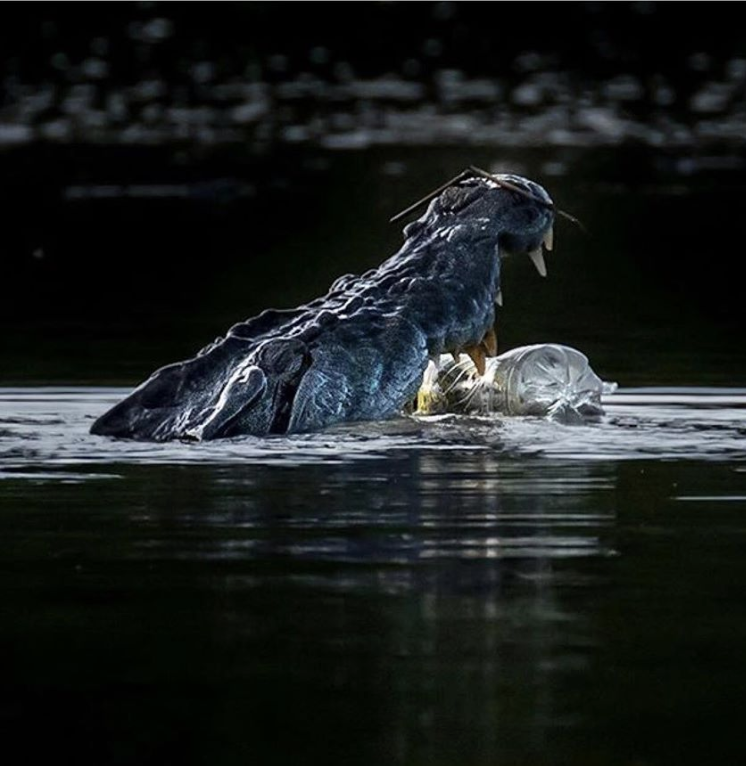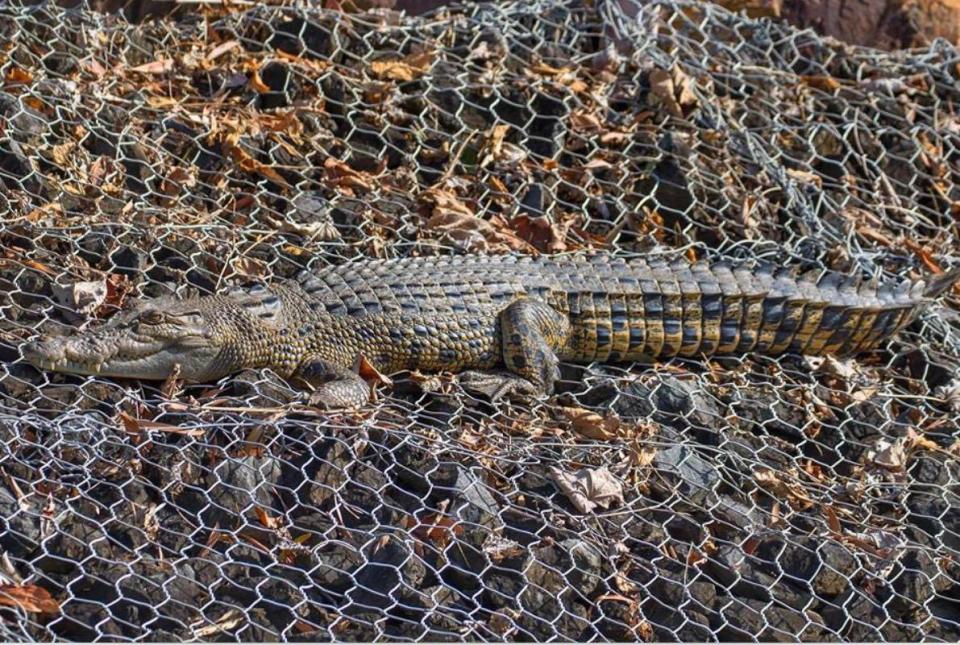The 'embarrassing' danger captured in this crocodile photo
While many would think the danger in this photo is the crocodile, look a little closer and you’ll see something else deadly.
The plastic bottle floating in the river is a sign of human development encroaching on the once-pristine Daintree River.
By sharing behind the scenes images of the wilderness, a veteran river guide hopes it will prompt the Queensland Government to help his beloved river.

Official travel advertisements showcase untouched slices of habitat, but some banks of the lower Daintree, where many of the crocodile sightseeing boats operate, are literally disappearing through erosion.
Solar Whisper Daintree River Crocodile and Wildlife Cruises owner David White fears some tourists are turning away as development impinges on the ecosystem.
The 56-year-old runs two electric sightseeing boats, but business is down about 25 per cent on last year and many tourists are shocked at the state of the river.
“We’ve had a few complaints and it’s a bit embarrassing,” he said.
“(The Daintree River) is a product that the tourism people push and sell and we should be looking after it to maintain our tourism industry.
“It’s a really nice place to work along the river, but it’s really sad to see the state of it.”

Due to high rainfall, the Daintree River naturally changes its course, snaking its way into private land.
Cutting through agricultural land, the river is no longer bordered by the thin strip of critical forest and mangroves.
Crocodiles can now be seen sunning themselves on steel wire used to reinforce the banks, instead of on natural river banks.
“The river changes, but property boundaries do not,” Mr White said.
“That buffer zone between the agricultural land and the river is really important and needs be maintained, not just for appearances but for the river, the Great Barrier Reef and the wildlife.”
Plea for government to help save crocodiles
While farming has existed along flat areas in the Daintree since the early part of the twentieth century, in the 1980s a key part of the World Heritage Listed Daintree Lowland Rainforest was subdivided into 1100 lots.
As roads, people, pets, amenities and rubbish entered the wilderness, iconic species like cassowaries were killed and injured.
For 25 years, government agencies and not-for-profits have worked to buy back unspoilt sections of the rainforest.


Rainforest Rescue has not only purchased and protected Daintree wilderness, but also replanted old farming land with forest.
The environment group’s CEO Brenden Barber told Yahoo News Australia he understood the concerns of tourism operators and that development in the lower Daintree certainly wasn’t receding.
He urges readers concerned about environmental challenges not to sit at home reading the news in despair, but to visit the rainforest and take action.
“I encourage people to get out and put their feet in the dirt, put their feet in the sand, put their feet in the ocean,” he said.
“Nature reminds us of who we are and what’s important.
“So pay more attention to nature, pay less attention to the news and do one good thing every day.”

Mr White would like to see the government expand its practice of buying back forest and acquire a wide section of land around the river to protect it from erosion.
“Tourism is the biggest thing up here, it’s bigger than sugar cane and it’s bigger than cows,” he said.
“We really do need to think seriously about looking after the Daintree and giving the appearance at least of a nice river with wilderness on the side of it.
See it before it's gone: Reef's 'frightening' prognosis prompts warning
Court ruling prevents the catch and kill of sharks on the Great Barrier Reef
'Up to their waists in blood': New drone video exposes Japanese dolphin slayers
How 'naive travellers' are threatening to ruin a $5 billion Aussie industry
TripAdvisor's 'shake up' set to drastically change family holidays
“It’s really important for the snakes and the birds and the crocodiles who all want to nest in that area by the side of the river.
“Really, they’ve just got to let the river go where it wants to go.”
The Queensland Department of Environment and Tourism Queensland said they could not answer specific questions about environmental issues impacting the Daintree River and tourism.
Do you have a story tip? Email: newsroomau@yahoonews.com.
You can also follow us on Facebook and Twitter, download the Yahoo News app from the App Store or Google Play and stay up to date with the latest news with Yahoo’s daily newsletter. Sign up here.



